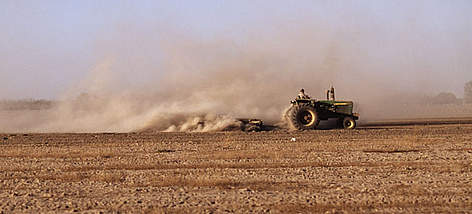Your cart is currently empty!
Relationship of Agnihotra to Soil and Agriculture
|
Previously we talked about the experiments on Homa Farming done at Palampur Agricultural University, Himachal Pradesh, Northern India. The experiments showed increased yields, better disease resistance, and better quality of the produce. |
|
|
| More research was done on the effects of Homa Farming on soil health at Dharwad Agricultural University, Karnataka, Southern India. Four M.Sc. theses brought some interesting results. But before we are discussing these results (in the next issue of this newsletter), let us first look deeper into the situation of our topsoil which is of utmost importance for the future of mankind. A Sanskrit text written in around 1500 BC noted, “Upon this handful of soil our survival depends. Husband it and it will grow our food, our fuel, and our shelter and surround us with beauty. Abuse it and the soil will collapse and die, taking humanity with it.” (Quoted from: George Monbiot, Ploughing On Regardless, The Guardian, 25th March 2015) Thus, abuse of soil mentioned as a possibility 3500 years ago has developed into a likely scenario now as we can see from recent reports from FAO, the Food and Agriculture Organization of the United Nations from two years ago. An article in Scientific American makes it very clear that we live in kind of emergency situation, see the following article: ROME (Thomson Reuters Foundation) – Generating three centimeters of top soil takes 1,000 years, and if current rates of degradation continue all of the world’s top soil could be gone within 60 years, a senior UN official said on Friday. About a third of the world’s soil has already been degraded, Maria-Helena Semedo of the Food and Agriculture Organization (FAO) told a forum marking World Soil Day. The causes of soil destruction include chemical-heavy farming techniques, deforestation which increases erosion, and global warming. The earth under our feet is too often ignored by policymakers, experts said. "Soils are the basis of life," said Semedo, FAO’s deputy director general of natural resources. "Ninety five percent of our food comes from the soil." Unless new approaches are adopted, the global amount of arable and productive land per person in 2050 will be only a quarter of the level in 1960, the FAO reported, due to growing populations and soil degradation. Soils play a key role in absorbing carbon and filtering water, the FAO reported. Soil destruction creates a vicious cycle, in which less carbon is stored, the world gets hotter, and the land is further degraded. "We are losing 30 soccer fields of soil every minute, mostly due to intensive farming," Volkert Engelsman, an activist with the International Federation of Organic Agriculture Movements told the forum at the FAO’s headquarters in Rome. "Organic (farming) may not be the only solution but it’s the single best (option) I can think of." (http://www.scientificamerican.com/article/only-60-years-of-farming-left-if-so-degradation-continues) This article advocates organic farming, definitely the first step we have to take. But as pollution of soil has gone so far, that will not be enough. Homa Therapy techniques have to be applied to restore soil helth, as the following article written by Shree Vasant Paranjpe shows: |
|
HOW HOMA FARMING WORKS By Shree Vasant Paranjpe The soil, water, atmosphere, subsoil water are all polluted by the metallic, non-metallic and gaseous toxicants of different types. These are clear guidelines for sustainable farming practices Shree Vasant gives. The article was written in 2008 or little earlier. |

Leave a Reply